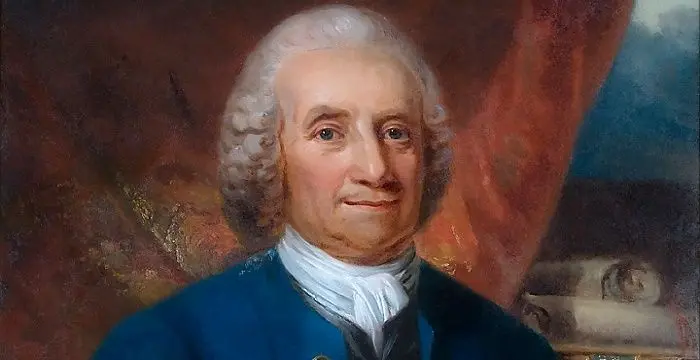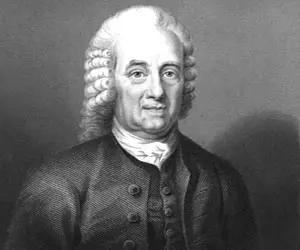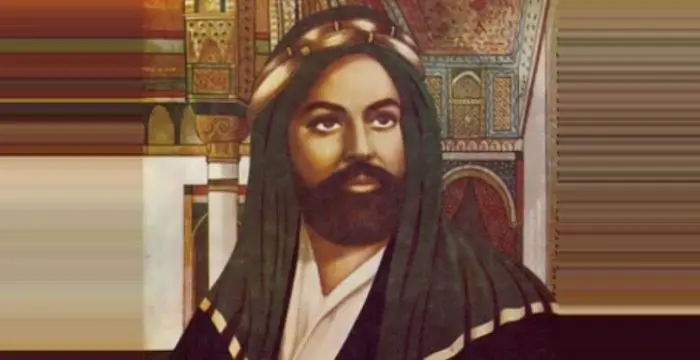
Swedenborg - Swedish Men, Birthday and Family
Swedenborg's Personal Details
Emanuel Swedenborg is one of the most prominent persons in Swedish history
| Information | Detail |
|---|---|
| Birthday | January 29, 1688 |
| Died on | March 29, 1772 |
| Nationality | Swedish |
| Famous | Philosophers, Theologians, Leaders, Spiritual & Religious Leaders, Scientists, Christian Mystic, Religious Leaders, Spiritual, Swedish Men |
| Universities |
|
| Birth Place | Stockholm |
| Gender | Male |
| Father | Jesper Swedberg |
| Sun Sign | Aquarius |
| Born in | Stockholm |
| Famous as | Scientist, Philosopher, Christian Mystic and Theologian |
| Died at Age | 84 |
// Famous Swedish Men
Bertil Gotthard Ohlin
Bertil Gotthard Ohlin was a famous Swedish economist. This biography profiles his childhood, family life & achievements.
Joel Kinnaman
Joel Kinnaman is an actor best known for appearing in the Swedish film ‘Easy Money.’ Check out this biography to know about his birthday, childhood, family life, achievements, and fun facts about him.
Stellan Skarsgård
Stellan Skarsgard is a Swedish actor known for his role in the flick ‘Breaking the Waves.’ Check out this biography to know about his birthday, childhood, family life, achievements and fun facts about him.
Swedenborg's photo
Who is Swedenborg?
A well-known scientist and inventor, Emanuel Swedenborg is one of the important persons in Swedish history. While his early life comprised of science study and discoveries, his later life focused on the spiritual aspects of life, where he experienced dreams and visions. Swedenborg claimed that he was appointed by the Lord to pen down a heavenly doctrine to reform Christianity. His work also includes explanation on the theory of Trinity and on the doctrine of salvation.
// Famous Religious Leaders
Prophet Muhammad
Prophet Muhammad was the founder of Islam, one of the most widespread religions in the world. This biography profiles his childhood, life story, achievements and more.
Murad IV
Murad IV was one of the mighty Sultans in the history of the Ottoman Empire. This biography profiles his childhood, family, accession, rule, administration and timeline.
Eckhart Tolle
Eckhart Tolle is a well-known spiritual leader, and author. Check out this biography to know about his childhood, family, personal life, spiritual awakening, etc.
Biography detail
Early Life
The third one amongst the nine children of Jesper and Sarah Behm Swedberg, Emanuel Swedberg was born on January 29, 1688. At the tender age of 8, he lost both his mother and elder brother Albert, in an epidemic. His father got remarried, to a wealthy widow Sarah Bergia. After Sarah's death, in 1720, Swedberg inherited half of her estate, Starbo and a modest fortune. From the age of eleven to twenty-one, he studied mechanics, geography, astronomy, and mathematics, at the University of Uppsala.
Swedberg completed his university course a year before making his grand tour, to Netherlands, France, Germany and London. In London, he stayed for about four years and studied physics, mechanics and philosophy. He read and wrote poetry as well. In the letters addressed to his brother-in-law Eric Benzelius, Swedberg claims to have made a list of inventions, which include a submarine and a flying machine.
Scientific Period
Emanuel Swedberg returned to his homeland, Sweden, in 1715 and for the next two decades, devoted himself completely to natural science and engineering projects. After a year, in a meeting with King Charles XII of Sweden, he proposed the idea of an observatory in northern Sweden, which was rejected. However, he was appointed as an assessor-extraordinary on the Swedish Board of Mines (Bergskollegium), in Stockholm.
In the next two years of his life (1716-1718), Emanuel published a scientific periodical titled 'Daedalus Hyperboreus'. The periodical held record of mechanical and mathematical inventions and discoveries. In this journal, he also mentioned about a flying machine, which he had earlier referred to in his letter to Eric. Around this time, Emanuel was also enobled, along with his siblings, by Queen Ulrika Eleonora and their surname changed to Swedenborg. Emanuel's scientific inventions include a dry dock of new design, a machine for working salt springs and a system for moving large boats overland.
In the field of biology, Swedenborg stressed on the importance of cerebral cortex. Apart from these, he drew feasible sketches of futuristic machines, including an airplane, a submarine, a steam engine, an air gun and a slow-combustion stove. Emanuel Swedenborg was offered the position of a professor in mathematics at Uppsala University, in 1724. However, he declined the offer, because he dealt with geometry, chemistry and metallurgy mainly, not maths.
New Studies
With time, Swedenborg's interests wavered. He switched to spiritual matters, resolute to find a theory that would explain how 'matter' relates to 'spirit'. This invention led him to discover the structure of matter and the process of creation itself. In his book, Principia, he outlined his philosophical methods, which included his experience, geometry and the power of reason. He, thus, presented his cosmology, which included the first presentation of the Nebular hypothesis.
In 1735, Swedenborg's released the book 'Opera philosophica et mineralis', which reflected his effort to conjoin philosophy and metallurgy. The work also earned him international fame and repute. Later in the year, he wrote the small manuscript 'de Infinito' basically defining the relation between finite and infinite and also between soul and body. In the 1730s, Swedenborg also studied anatomy and physiology. In 1743, he urged a leave of absence to go abroad.
The aim behind Swedenborg's leave was to collect material on 'Regnum animale' (The Animal Kingdom, or Kingdom of Life), to explain the soul from an anatomical point of view. On this travel expedition, Swedenborgexperienced many different dreams and visions, some greatly pleasurable, others highly disturbing. These experiences were recorded in his Journal of Dreams, which reflected the battle between the love for his own self and the love for God.
Visions and Spiritual Insights
While proceeding further into the subject 'Regnum animale', Swedenborg felt like dropping his current project and writing a new book, this one about the worship of God. He acted according to his wishes and started working on the book 'De cultu et amore Dei', or The Worship and Love of God. Though the book had still not been completed, Emanuel Swedenborg still got it published, in London, in June 1745.
Scriptural Commentary & Writings
To complete his half done task 'De cultu et amore Dei', Swedenborg relieved himself from the post of Assessor of the Board of Mines and took up the study of Hebrew. He, then, started working on the spiritual interpretation of the Bible, with the goal of interpreting the spiritual meaning of every verse. For the next decade, he devoted his time and study to this task. Abbreviated as Arcana Cœlestia or Heavenly Secrets, the work became the magnum opus or the basis of his further theological works.
Later Life & Death
Emanuel Swedenborg spent the last quarter of his life in Stockholm, Holland, and London. During this phase, he published 14 works of spiritual nature. He also made a lot of friends around this time. In 1770, Swedenborg traveled to Amsterdam, to complete the publication of his last work, 'Vera Christiana Religio', one of his most famous contributions. In 1771, after suffering from a stroke, he became partially paralyzed and was restricted to bed. Though he was getting better, Swedenborg left for the heaven abode on March 29, 1772. He was buried in Swedish Church, in Shadwell, London.
Scientific Beliefs & Theology
In 1744, Swedenborg presented his first theory of correspondences, wherein he defined the relationship between the natural, spiritual and divine worlds. The foundation of this theory dates back to Neoplatonism and the philosopher Plotinus. On such strong grounds, Swedenborg interpreted even the small and trivial incidents mentioned in the Bible, to gain a deep spiritual meaning. Swedenborg also experienced psychic experiences in his life. His theology, which he based on actual experiences, reflected on how Jesus Christ freed himself from materialistic boundaries. He examined this idea by an exposition on Genesis and Exodus.
Trinity & Sola fide (Faith Alone)
Christian Doctrine of the Trinity believed that there are three persons - the Person of the Father, the Person of the Son, and the Person of the Holy Spirit. Contrary to this, Swedenborg believed that these are not three persons, but three different aspects of one God, in whom lays the Divine Trinity. He also firmly disbelieved that faith alone can bring about salvation before God. He was of the opinion that along with faith, a person's deeds in life are also very important. It is only a conjunction of faith and charity in a person that can bring about salvation.
Honors
- After the death of King Charles XII (1718), Queen Ulrika Eleonora ennobled, or dignified, Swedberg and his siblings, from Swedberg to Swedenborg, to honor the services of their father.
- On the 140th anniversary of Swedenborg's death, his earthly remains were transferred to Uppsala Cathedral, in Sweden.
- In 1997, a garden, play area and memorial, near the Uppsala Cathedral road, were created in his memory.
- In 1938, the site of Swedish Church, where he was buried in London, was redeveloped, and in his honor, the local road was renamed Swedenborg Gardens.
// Famous Spiritual
Prophet Muhammad
Prophet Muhammad was the founder of Islam, one of the most widespread religions in the world. This biography profiles his childhood, life story, achievements and more.
Murad IV
Murad IV was one of the mighty Sultans in the history of the Ottoman Empire. This biography profiles his childhood, family, accession, rule, administration and timeline.
Eckhart Tolle
Eckhart Tolle is a well-known spiritual leader, and author. Check out this biography to know about his childhood, family, personal life, spiritual awakening, etc.
Swedenborg's FAQ
What is Swedenborg birthday?
Swedenborg was born at 1688-01-29
When was Swedenborg died?
Swedenborg was died at 1772-03-29
Where was Swedenborg died?
Swedenborg was died in London
Which age was Swedenborg died?
Swedenborg was died at age 84
Where is Swedenborg's birth place?
Swedenborg was born in Stockholm
What is Swedenborg nationalities?
Swedenborg's nationalities is Swedish
What was Swedenborg universities?
Swedenborg studied at Uppsala University
Who is Swedenborg's father?
Swedenborg's father is Jesper Swedberg
What is Swedenborg's sun sign?
Swedenborg is Aquarius
How famous is Swedenborg?
Swedenborg is famouse as Scientist, Philosopher, Christian Mystic and Theologian






